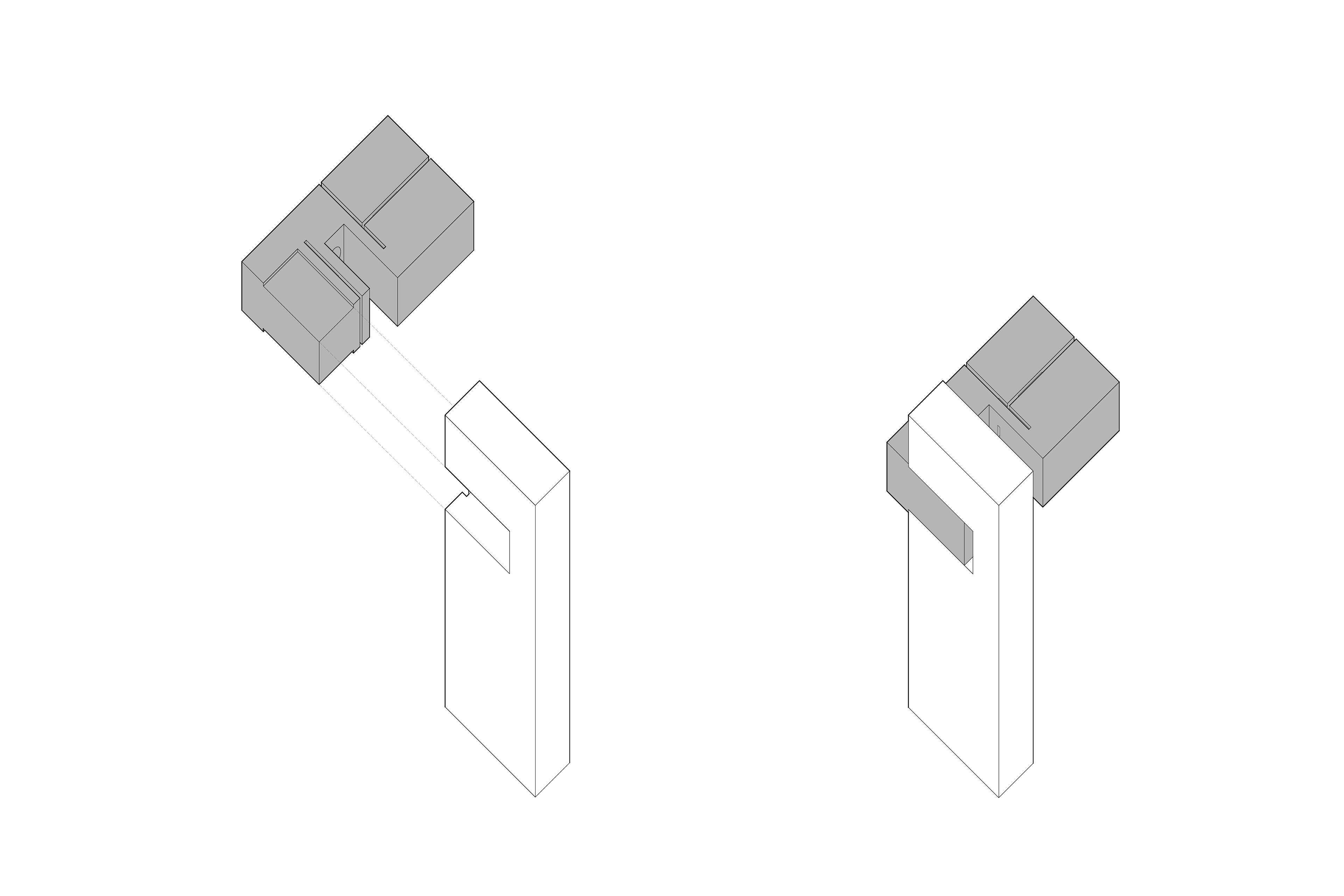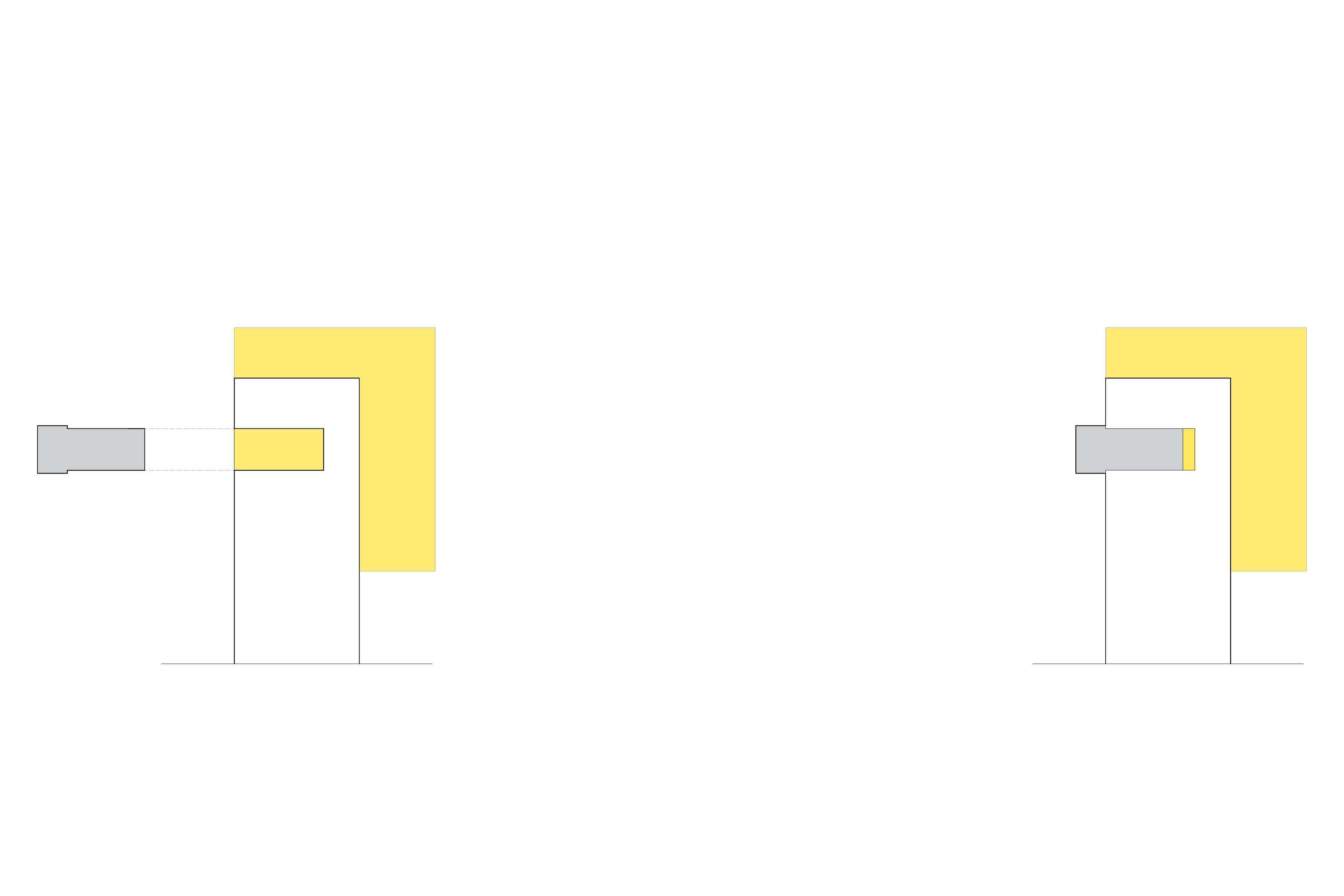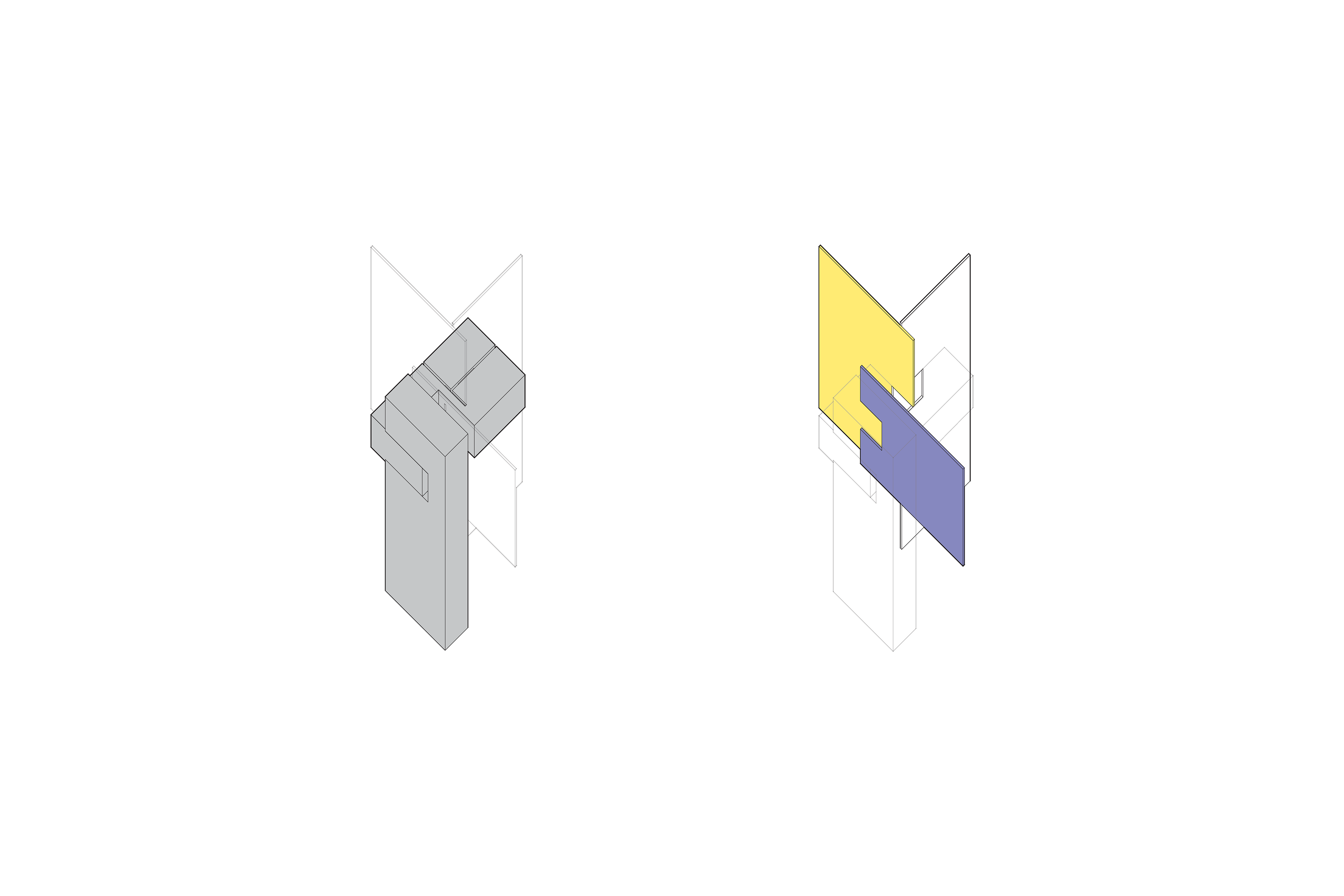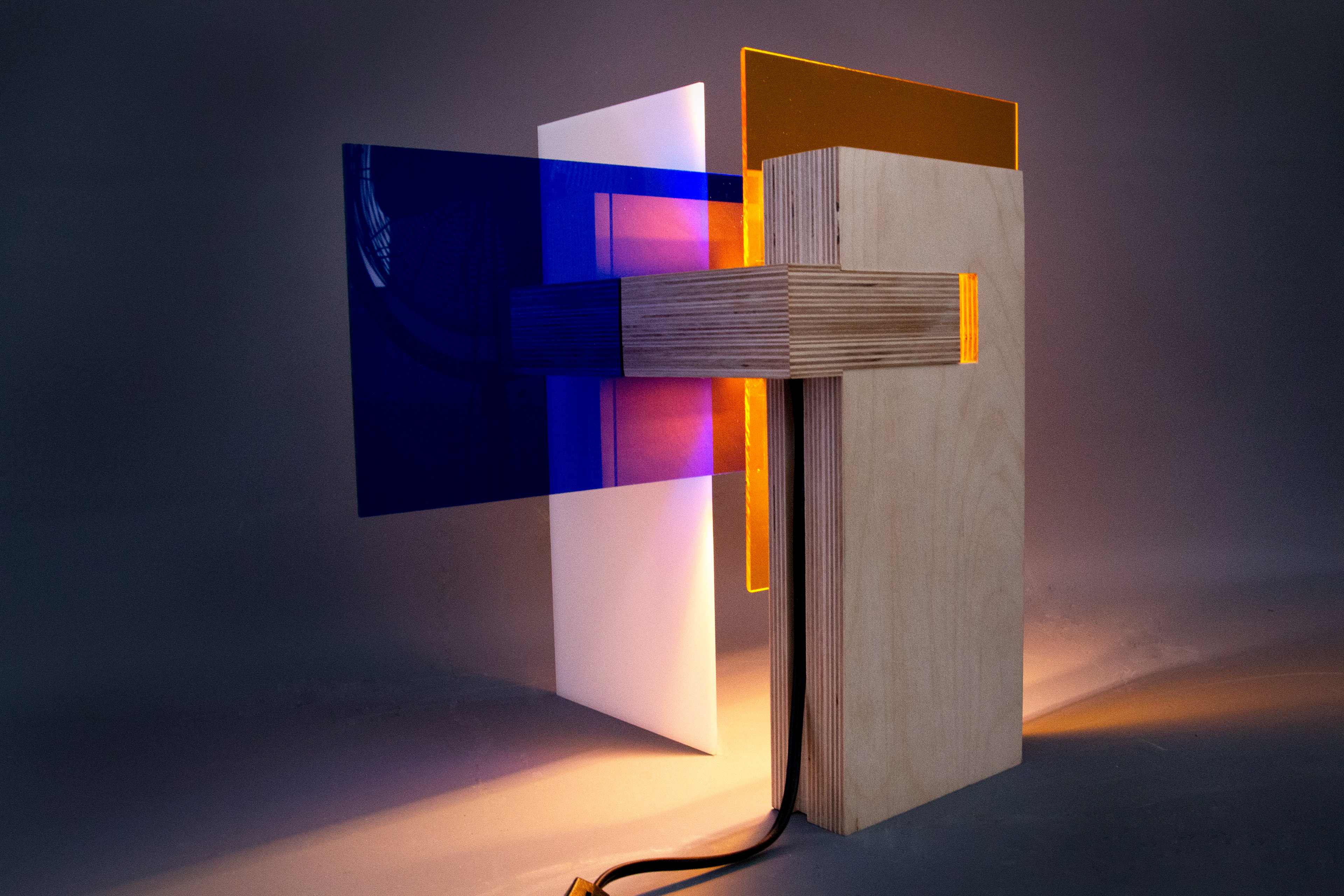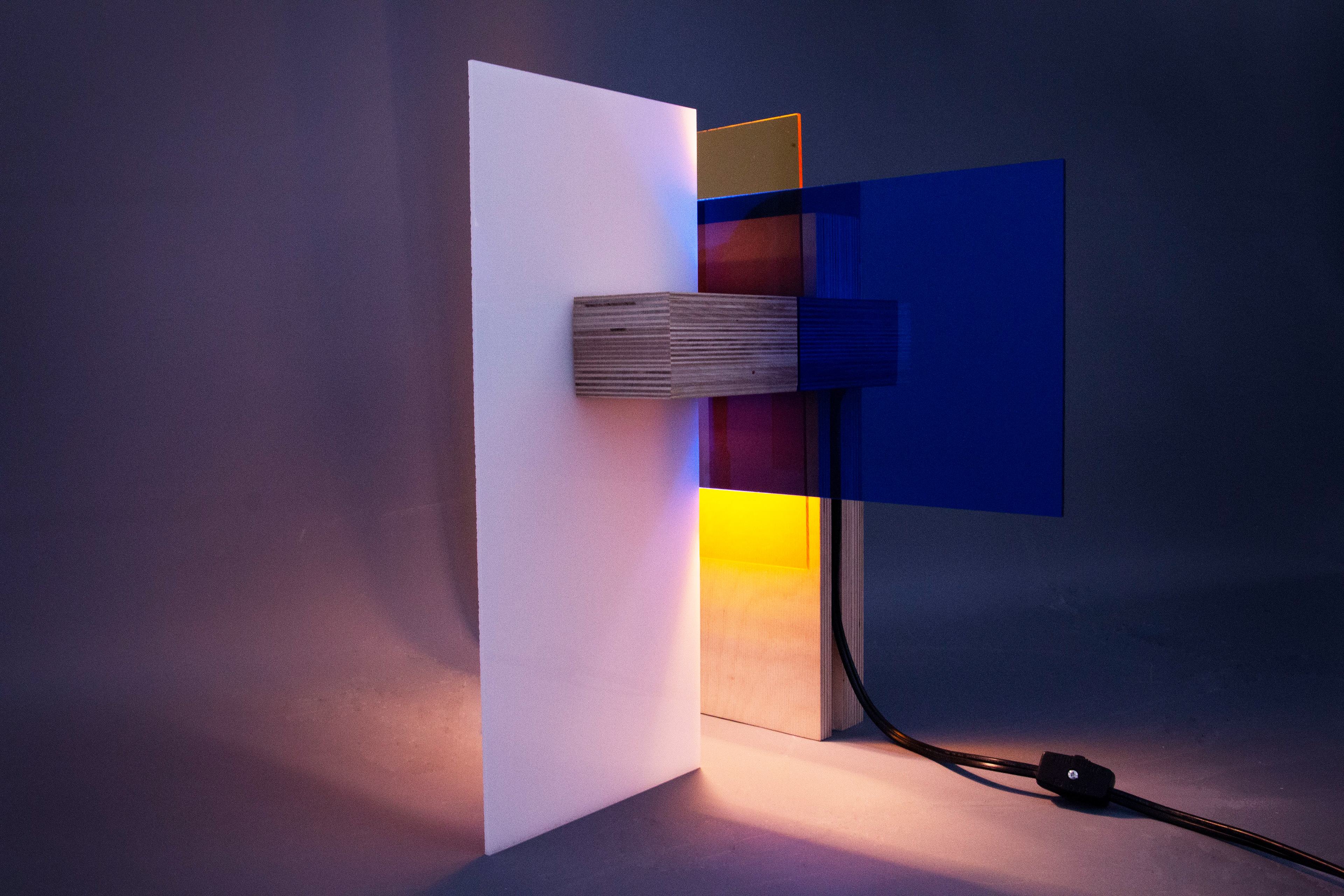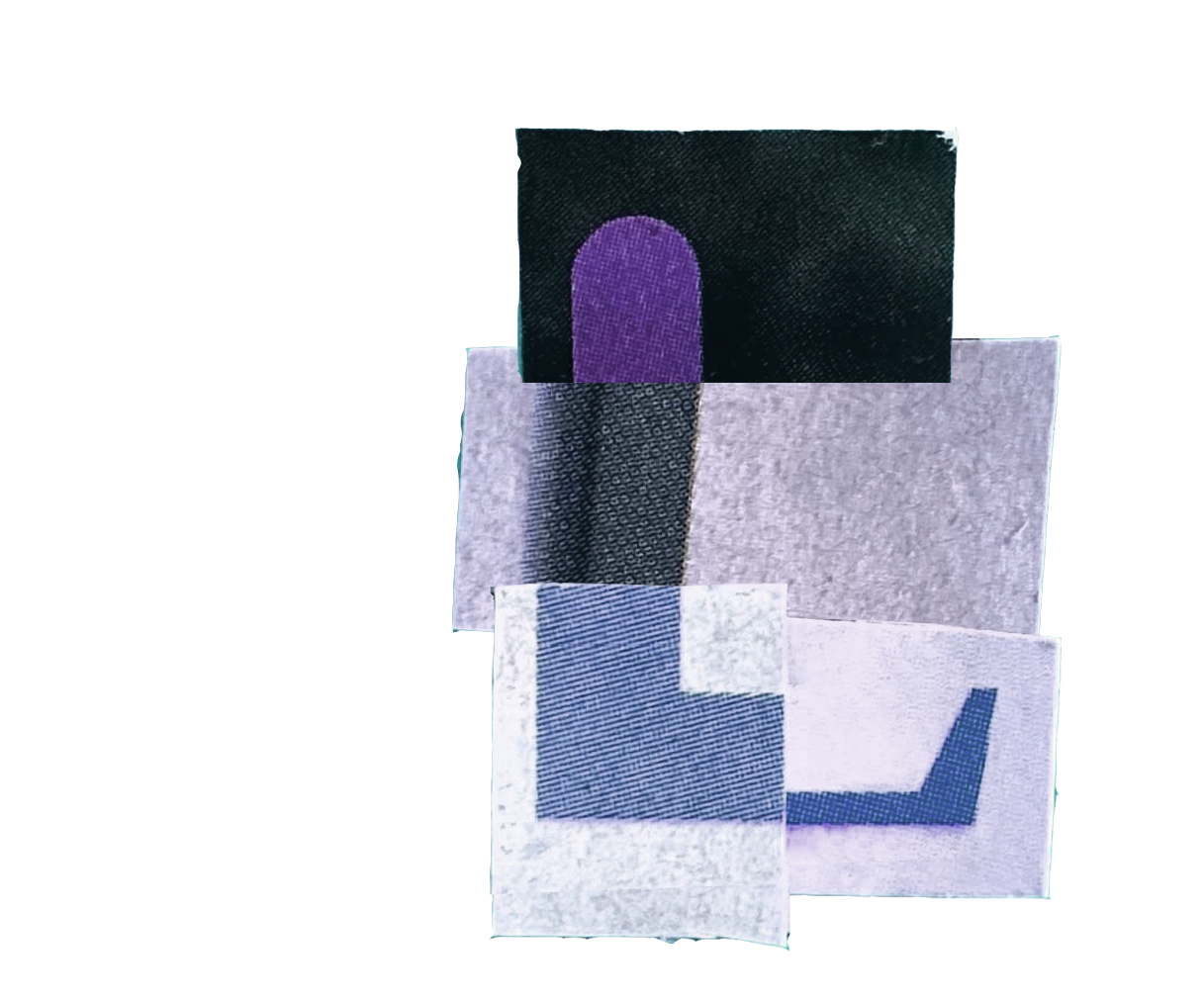Van Doesburg’s Contra-construction and his beliefs about defying gravity and infinite space, spoken of in his 1930 manifesto and other writings, are the basis of how I brought the four planes into the third dimension. The planes I chose from the contra-construction included two that were detached from the others, seemingly suspended in air. There also appeared to be a central zone where the planes converged. This zone, realized as the added wooden plane, is the core from which the other planes can extend into infinite space. I executed Van Doesburg’s ideas of contradicting gravity by only allowing two planes to touch the ground. Additionally, gravity appears to be defined as the central wooden plane is presumably heavy, however, suspended.
The plan derived from the contra-construction includes multiple instances where space appears to extend into the infinite. There is also a clear sense of balance despite asymmetry, another idea in Van Doesburg’s manifesto. Despite clear distinctions between each plane, the sense of visual balance is still maintained.
As I made transformations to the composition for it to function as a lamp, I maintained “a balanced relationship between unequal parts” from all views. Balance with each material can also be perceived. Both the thick, heavy wood and the thin, light acrylic appear balanced when isolated from one another.
The motion created by the sliding joints allowed for the planes to have an “open” or expanded relationship in which they can “extend into infinite space.” The two colored acrylic planes are interchangeable, creating distinct effects when rearranged. The resulting lamp remains balanced while challenging gravity. Each plane in the composition engages with both light and color. Due to the thickness of the wood, the light primarily acts vertically, excepting the gap between the wood planes, in which light pierces through horizontally.
Theo van Doesburg Contra Construction, 1923
image provided by MoMA
